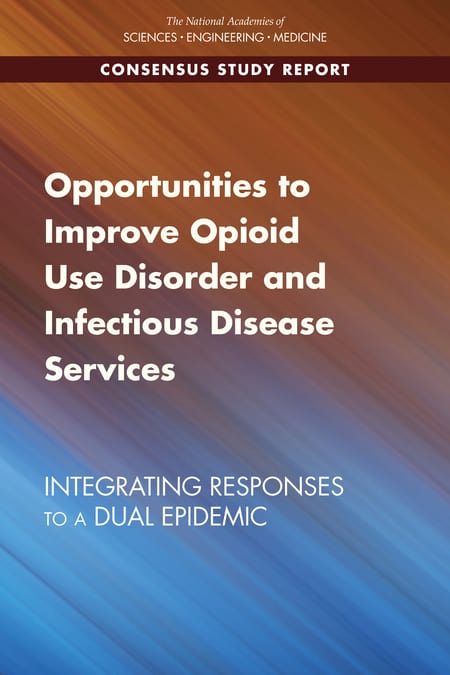 On January 23, 2020, the National Academies released a report with recommendations to improve opioid and infectious disease treatment in the U.S. This report was informed by consultations of the nation’s leading experts in addiction medicine, infectious disease, and social determinants of health.
On January 23, 2020, the National Academies released a report with recommendations to improve opioid and infectious disease treatment in the U.S. This report was informed by consultations of the nation’s leading experts in addiction medicine, infectious disease, and social determinants of health.
The opioid epidemic and increasing rates of infectious diseases such as viral hepatitis, STIs, and HIV are correlated public health concerns that call for integrated efforts to effectively utilize time and resources to address both and get people all of the care they need.
The report identifies 9 barriers that have the most significant effect on integrating opioid use disorder (OUD) and infectious disease interventions. Key barriers identified include:
- Prior authorization requirements for providers to prescribe buprenorphine to treat OUD that delay treatment and cause people to continue using injection drugs and increasing their risk of acquiring an infectious disease.
- Requirement under the Drug Addiction Treatment Act (DATA) that mandates providers complete a lengthy training before being able to prescribe buprenorphine
- Federal funding restrictions that constrain efforts to expand syringe service programs in more locations throughout the U.S.
- Same-day billing restrictions that do not allow providers to bill for both clinical and behavioral health interventions on the same day for the same client to reduce the risk of loss to follow up when people have to return for multiple office visits to get care.
Among the 11 recommendations for improvement listed in the report are addressing deficiencies in workforce training to equip personnel to effectively engage and treat people with co-occurring OUD and infectious diseases, reducing stigma in clinical settings, and expanding harm reduction services such as syringe service programs.
The Institute’s Hepatitis Policy Project has addressed the effects of stigma on efforts to eliminate hepatitis C and the need to expand syringe services programs in prior publications.



